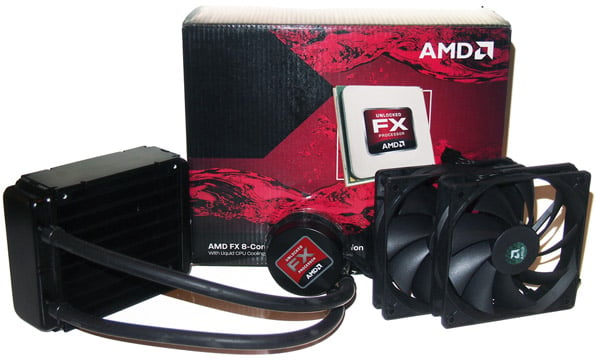AMD FX-8150 8-Core CPU Review: Bulldozer Is Here
Overclocking, Power Consumption
Having sceen FX processors break the 8GHz mark with our own eye--using exotic cooling, of course--we were eager to see how well our particulr CPU overclocked. To that end, we also spent some time overclocking the new AMD FX-8150 processor, using a standard air cooler and AMD's own Overdrive utility. For these overclocking tests, we bumped the CPU voltage up to 1.4125v, disabled Turbo, and increased the CPU's multiplier until our test system was no longer stable.

AMD FX-8150 Overclocked to 4.4GHz
In the end, we were able to take the FX-8150 up to a stable 4.4GHz. At that speed and voltage, even with a basic air-cooler, core temps hovered around the 69'C mark, which is lower than we expected. Considering how easy it was to take our CPU over the 4.4GHz mark, and that we've seen early chips already hit much higher frequencies, we suspect that higher clocks will easoli be possible with exotic coolers and more aggressive voltage tweaking. As an interesting aside, overclocking the FX-8150 to 4.4GHz resulted in a Cinebench R11.5 score of 7.09, and increase of 1.07 or 17.5% over the stock score of 6.02.
Although it didn't arrive in time for testing, AMD also sent over one of the self contained water-coolers it will be offering with some of its FX series processors. The cooler includes a 120mm radiator, dual 120mm fans (should you want to arrange them in a push-pull configuration), and the mounting hardware necessary to fit the water-block / pump assembly to a Socket AM2/AM3/AM3+ motherboard.
|
Before bringing this article to a close, we'd also like to take a but about power consumption. Throughout all of our benchmarking and testing, we monitored how much power our AMD FX-8150 based test system was consuming with a power meter, versus other test systems we used for benchmark comparisons on the previous pages. Our goal was to give you an idea as to how much power each configuration used while idling at the desktop and while under a heavy CPU workload. Keep in mind, this is total system power consumption being measured at the outlet and not the the individual power of the CPUs alone.

Our AMD FX-8150 based test system, consumed a little less power than the Phenom II X6 1100T did while idling, but while under load, the FX-8150 pulled down about 14 more watts. Considering the fact that the FX-8150 generally offers better performance than the X6 1100T, using somewhat more power probably won't turn off many users. However, the FX-8150 uses a more advanced 32nm manufacturing process (vs. the Phenom II's 45nm) and one the FX series' main claims to fame was supposed to be power efficiency. WIth that in mind, is surprising to see it using more power than AMD's previous generation desktop 6-core processor. This scenario may change in time as AMD tweaks the FX and Global Foundries' 32nm process matures, but for now it looks like high-end FX-series processors will consume somewhat more power than the Phenom II X6 it will supplanting at the top of AMD's desktop processor line-up.







